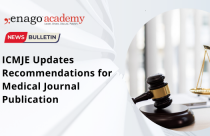Navigating Nuance: A Medical Writer’s Guide to Communicating Uncertainty and Evolving Evidence

Introduction: Communicating in the Fog
The early stages of the COVID-19 pandemic exposed a core challenge in medical communication: how to responsibly convey scientific uncertainty and evolving evidence. From conflicting guidance on mask usage to debates over vaccine efficacy and variant transmission, the scientific narrative shifted rapidly, and medical communicators were under pressure to keep pace. For the public and even many clinicians, the shifting sands of scientific guidance felt disorienting—leading to confusion, mistrust, and at times, misinformation.
Yet, uncertainty is not a flaw in science—it is its nature. Scientific progress is iterative. Data evolve, hypotheses are tested and revised, and consensus is built gradually. The challenge lies in how this dynamic, uncertain process is translated into information that is not only accurate but also understandable, credible, and actionable.
Medical writers are uniquely positioned in this ecosystem. As translators of scientific data, they must balance transparency with clarity, acknowledge doubt without eroding trust, and communicate evolving knowledge without appearing inconsistent. This article explores how to effectively manage these responsibilities and offers best practices for communicating uncertainty in a clear, ethical, and audience-sensitive manner.
Understanding the Landscape of Uncertainty
Scientific uncertainty can manifest in various forms. Epistemic uncertainty arises from gaps in knowledge—such as when clinical trials are ongoing or data is incomplete. Aleatory uncertainty, on the other hand, stems from inherent biological variability, making predictions difficult even when mechanisms are well understood. There is also source uncertainty, where conflicting expert opinions or contradictory studies lead to confusion. Finally, ambiguity may arise when existing data supports more than one plausible interpretation.
This complexity is compounded by the ever-evolving nature of medical evidence. New findings from clinical trials, real-world data, or updated meta-analyses often necessitate revisions to clinical guidelines or public health advice. Unfortunately, these shifts can be difficult to explain to audiences conditioned to expect clear and consistent recommendations.
Communicating such changes is not merely a matter of sharing facts. It involves navigating a landscape shaped by urgency, media pressure, and the viral spread of misinformation. Effective communication must counter these forces with thoughtful, well-framed messages that uphold scientific integrity without overwhelming the audience.
Core Principles for Communicating Uncertainty
At the heart of effective communication is transparency. This means clearly distinguishing between what is known and what remains uncertain. Medical writers must resist the urge to simplify for the sake of clarity, especially when doing so risks misleading the audience. Instead, careful language should reflect the tentative nature of early findings. Rather than declaring, “This drug cures COVID-19,” a more accurate and responsible phrasing would be, “Preliminary data suggest this drug may reduce symptoms.”
Contextualization is equally important. Explaining why certain information is still evolving—for instance, because it is based on early-stage trials or preclinical data—helps audiences appreciate the dynamic nature of medical research. Placing new findings within the broader body of existing evidence also helps avoid misinterpretation. Is a new study an outlier, or does it build on existing trends?
Writers must also strive for clarity without oversimplification. This involves using plain language and avoiding jargon, but not at the expense of accuracy. When technical terms are necessary, they should be explained in accessible terms. Analogies and metaphors can be helpful, but they must be chosen carefully to avoid distorting the science.
Quantifying uncertainty through tools such as confidence intervals, probability ranges, or visual aids can make abstract concepts more tangible. A funnel plot, for example, can show how data precision improves with larger sample sizes. It’s crucial, however, to explain what these statistics mean in practical terms—otherwise, they may confuse rather than clarify.
Managing expectations is another cornerstone of effective communication. Writers should emphasize that current recommendations are based on the best available evidence, but may change as new data emerges. Providing a rough timeline for updates—such as the anticipated completion of a Phase 3 trial—can help audiences stay informed without feeling blindsided by change.
A medical writer’s tone must also reflect empathy. Uncertainty can trigger anxiety, especially when people are making decisions about their health or the health of loved ones. Acknowledging this emotional dimension, while focusing on what actions are possible despite uncertainty, builds trust and rapport.
Finally, consistency across messages and platforms helps maintain credibility. Collaborative communication efforts—especially during public health crises—should aim to harmonize messaging between institutions to avoid public confusion.
Practical Techniques for Medical Writers
Crafting nuanced language is a daily task for medical communicators. Choosing verbs like “suggest,” “indicate,” or “appear to” instead of “prove” or “confirm” keeps claims in line with the evidence. Similarly, adverbs and qualifiers such as “preliminary,” “early data,” or “pending further review” set appropriate expectations.
In rapidly evolving scenarios, living documents—such as online FAQs or dashboards—can offer up-to-date guidance while maintaining transparency about what has changed. Using clear version control and highlighting updates enables users to track the evolution of recommendations.
Presenting information in layers is also helpful. A high-level summary can satisfy time-pressed readers, while deeper sections and appendices cater to those seeking more detail. This approach respects the diversity of your audience without diluting content quality.
Working with subject matter experts (SMEs) is critical. Writers should engage closely with researchers and clinicians to understand the nuances of the data. If an SME appears to overstate a conclusion, it’s the writer’s responsibility to respectfully challenge and refine the message.
Proactively addressing misinformation strengthens credibility. Anticipate common misunderstandings and include clarifications or “myth-busting” segments within your content. For instance, if a headline might mislead readers into thinking a correlation implies causation, include a sidebar explaining the difference.
Tailoring content for different audiences is another essential skill. A press release should not look like a peer-reviewed manuscript. Consider the background, expectations, and emotional context of your readers. A patient leaflet will require much more accessible language than a scientific blog.
Finally, well-designed visual aids—such as charts showing evidence quality, sliders to depict confidence ranges, or timelines for data updates—can enhance understanding and retention of complex material.
Lessons from Real-World Case Studies
Consider the early COVID-19 mask guidance. Initial uncertainty about asymptomatic transmission led to mixed messaging, which eroded public trust. If communicators had been more explicit about the evolving nature of the science—stating that guidance might change as more data became available—this confusion could have been mitigated.
Another example involves emergency use authorizations (EUAs). Many people misunderstood EUAs as equivalent to full FDA approvals. Clear communication explaining the difference between these regulatory pathways, including what level of evidence supports each, would have been beneficial.
Conflicting dietary guidelines offer another case in point. When studies present differing conclusions, communicators must explain variations in study design, populations, or endpoints, rather than merely reporting the contradiction.
Ethics and Responsibility
Medical writers must uphold the ethical principles of beneficence (doing good) and non-maleficence (avoiding harm). This includes resisting pressures to oversimplify, overstate, or omit key details. In an era of rampant misinformation, medical writers serve as a bulwark of accuracy and responsibility.
Advocating for transparency, even when it’s uncomfortable, is vital. Acknowledging uncertainty doesn’t diminish trust—it strengthens it. By being honest about what we don’t know, we validate the audience’s right to informed decision-making.
Ongoing professional development in communication strategies and critical thinking ensures that writers stay adaptable and effective in a fast-changing landscape.
Conclusion: Embracing the Complexity
In today’s information-saturated environment, the ability to communicate scientific uncertainty is more than a skill—it’s a public service. Medical writers who master this art help bridge the gap between evolving science and human understanding.
By practicing transparency, contextualization, empathy, and adaptability, writers can build trust, support better health outcomes, and contribute to a more scientifically literate society.
In the fog of emerging data, let your clarity be the compass.
References
- Fischhoff B, Davis AL. Communicating scientific uncertainty. PNAS. 2014;111(Supplement 4):13664–13671.
- World Health Organization. Communicating risk in public health emergencies. 2017.
- Ioannidis JPA. Why most published research findings are false. PLoS Med. 2005;2(8):e124.
- Lewandowsky S, Ecker UKH, Seifert CM, Schwarz N, Cook J. Misinformation and its correction. Psychol Sci Public Interest. 2012;13(3):106–131








